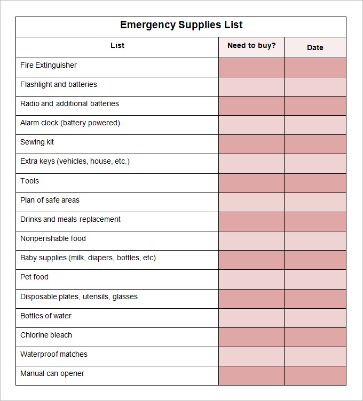
Payroll providers are specialists in their field, which means it’s their job to stay on top of the latest tax laws and regulations around the globe. For a small in-house team, assembling such expertise may be an unrealistic demand. A New York- or San Francisco-based company that keeps payroll in-house, for example, must pay “big city salaries” to attract the right employees for managing payroll, just like the rest of its internal workforce. If many hours of work can instead be assumed by third-party employees somewhere with a lower cost of living, the outsourced functions tend to become cheaper to perform. Typically, providers report to the client on a regular, predetermined basis, confirming services rendered and detailing performance.
What Is Outsourcing?
It wasn’t until the late 1980s that many companies, hindered by bloated internal structures, began to see broad strategic value in “hiring away” work once completed in-house. Once the possible cost savings of the practice became clearer, there was no turning back. The term “payroll” can describe both a company’s list of employees to be paid and also the total amount an employer owes in wages and salaries. In the modern business context, however, payroll most often refers to the process of paying employees or to the entities responsible for carrying this out.
Track and manage time
And when you add new jurisdictions, you multiply the level of complexity of each payroll run. Companies experienced in arranging outsourcing contracts with third-party entities can rely on past experience for guidance. For companies newer to outsourcing, however, it’s worth taking plenty of time to select the right provider and to make sure all other aspects of an arrangement check out. Thanks to the tens of thousands of small and midsized businesses who trust ADP to support your HR, payroll, benefits, and workplace safety needs. While building your business, you’ve probably had your hand in everything, from hiring employees to running payroll. And while your business may be your pride and joy, it can still be tough to do everything on your own.
There are pros and cons to every business decision and payroll outsourcing is no different. Before partnering with a full-service payroll provider, employers should make sure the vendor is capable of meeting all of their requirements and has a reliable track record. When a business delegates a portion or all of its payroll operations to a third party, it’s known as payroll outsourcing. In addition to running payroll, full-service providers typically help with tax reporting, regulatory compliance, data security and unemployment claims. Perhaps the most comprehensive HR and workforce management provider in the list, Rippling is a juggernaut in the industry illusory law and legal definition (and rightly so). Generally, they involve set monthly or annual fees, plus extras for additional services.
- Our 2024 guide takes you through the ins and outs of how payroll outsourcing works and how your company can best evaluate a possible outsourcing strategy.
- When choosing a payroll outsourcing provider, it’s important to remember what’s at stake.
- It wasn’t until the late 1980s that many companies, hindered by bloated internal structures, began to see broad strategic value in “hiring away” work once completed in-house.
- To reduce the risk of a security breach when you outsource, make sure the partner you choose has strict security measures in place.
- Find out as much as you can before committing and ask questions if you need to.
Paychex PEO: Best HR + payroll service
The terms “payroll service provider” and “payroll services” are often used to apply to either type of organization. We recommend checking out our 2024 guides for the best cheap payroll services, best payroll services for small businesses and best PEO services. ADP provides customized online payroll services, solutions and software for businesses of all sizes.

For example, you’ll need to consider local labor laws and calculate salaries in a range of currencies. By outsourcing your payroll, you can streamline your operations, reduce administrative burden, and gain access to wk 4 liabilities of an auditor ppt expertise. A company’s core business functions—whatever it does to generate revenue—are understandably its main priority. Its financial value as a near-term, cost-cutting measure has been boosted dramatically by globalization, which opened access to international labor far less immediately expensive than America’s domestic workforce. It encompasses a variety of tasks, not all of which are necessarily carried out by the same entity. The process begins with the integration of employees into a payroll system and extends through end-of-year tax responsibilities.
As another major player in the HR and payroll space, ADP’s offerings are narrower in focus than Rippling’s, but they gain in depth what they lose in breadth. Known throughout the industry for their enterprise-grade services in HR support, ADP offers solutions to businesses ranging in size from one to over one thousand employees, all with the same level of functionality. Most relevant to our discussion here, Rippling offers solutions for both domestic and global payroll, benefits management and PEO services.
Find out as much as you can before committing and ask questions if you need to. As discussed, non-compliance — whether accidental or otherwise — can land your business in hot water. Since you’re trusting another company with personal and financial data, you need to be sure that it is compliant piece rates and commission payments and able to protect against data theft. It’s no surprise, then, that many organizations are outsourcing their payroll — or at least considering it.
For the client, this is an opportunity to ensure everything is going according to plan. The final major component of the process is for outsourced end-of-year tax duties. This includes both submitting documentation to tax authorities—which the provider has maintained throughout activities—and remitting the tax dollars themselves. “Payroll co-sourcing” describes a hybrid model in which some elements of the payroll process are hired away while others are completed in-house.
What kind of experience your staff has while working for you can have a major impact on some seemingly unrelated financial outcomes. For example, if turnover is high, you may have additional expenses tied to hiring, onboarding and offboarding staff. Other times, you can actually do something about it, if you can pinpoint what’s driving everyone out of their office chairs. For the best results, find a payroll software solution that doesn’t take much work to put the system in place. If you’re just using software, either the tool can pay your people or it can’t.
